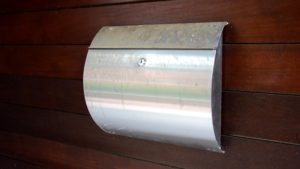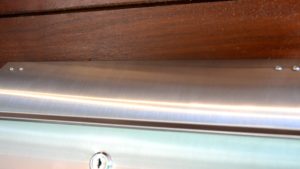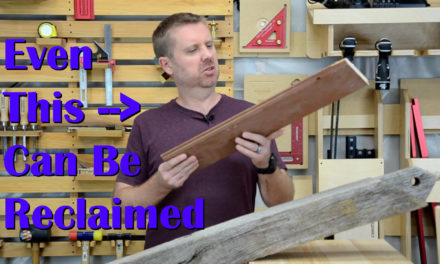Cleaning and passivating stainless steel is an easy way to keep your stainless steel looking like the day you bought it. Today, I’m going to demonstrate how to clean and passivate stainless steel. I’ll also show you a trick for removing rust from stainless steel.
Tools Needed
- Garden hose…or a super soaker!

Materials Needed
- Stainless Steel Cleaner/Passivator
- If you don’t need rust removal, use this one
- Abrasive pads
As an Amazon Associate I earn from qualifying purchases. These links are tools and materials that I either use or have researched enough to recommend them.
Stainless Steel Needs Maintenance
Cleaning and Passivating Stainless Steel is essential for a long life and good looks. But wait a second! I thought stainless didn’t rust? It’s a common misconception that stainless steel won’t rust or that stainless steel is maintenance free. It actually does require a little bit of care, but it’s simple and easy. Let’s get started on this much neglected stainless steel mailbox. You can see that it’s quite dirty. It has some paint or stain on it. And it has some trace amounts of rust.

Stainless Steel Cleaning Starts with Soap and Water
We’re going to first tackle all the dirt and grime with simple soap and water. I just take warm water and dish soap and get all the dirt off. Then I rinse it thoroughly. This won’t get the rust out nor will it get spots of stain or paint out. I tackle the stain first with some mineral spirits and a scotch brite pad.
Stainless Steel Rust Removal
Removing the rust is a little more involved. I’m going to use Citrisurf 2310. This is a cleaner, rust remover and passivator all in one. I’ll explain passivation in a bit. For now we’re going to focus on removing the rust. (You should first apply this to a test area to make sure it doesn’t discolor your stainless steel). I apply the Citrisurf to the affected area and then I use an abrasive pad to quickly remove the rust. This is more abrasive than a scotch brite pad but nothing like sandpaper. Since it is abrasive, we need to scrub with the grain of the stainless steel. You can see the distinct grain direction and that’s what we want to follow. It helps to take long strokes over a wide area so you don’t create an obvious spot where the pad was used. These pads come in various grits, if you need to use the most aggressive grit, you’ll want to go over the area with finer grit pads just like you would with sandpaper to give it a final shine and not a rough look.
Passivating Stainless Steel
Once the rust is removed, we want to spray the Citrisurf over the entire stainless steel area – use a rag to spread it around if you need to. And now we let it sit for about 20 minutes so passivation will occur. This is a good time for me to briefly explain passivation before we move on to our final step.
Passivation is a chemical reaction between an acid (citric acid in this case) and the stainless steel that creates a thin oxide layer which helps keep it from rusting or corroding. When you passivate stainless steel, you greatly increase the odds you won’t have to watch this video again or you at least won’t have to watch it every couple of years. You can go many years with having to address any rust issues. One thing I need to mention is that this acid needs to stay wet for the chemical reaction to take place. If you’re out in the sun, be sure apply more or spray it with a light mist of water occasionally.
About 20 minutes has gone by so now we rinse off the Citrisurf. You must rinse this very thoroughly. If you see a cloudy haze on the stainless steel either rinse more or do the process over again and be sure the rinse with a lot of water! Your stainless steel now has a protective layer on it.
More Rust Protection
Cleaning and passivating stainless steel isn’t where things have to stop. We go one step further. We are going to let this dry and apply a rust prevention coating call Rust Rescue 200. This is completely optional but I would recommend it on surfaces near salt water or pool water. We use a clean lint-free cloth and wipe it all over our stainless steel surface. We wait 10 minutes then wipe off the excess and let it dry. It is that simple!
Let’s see how things turned out….
You can see here that we brought the stainless steel back to life and our passivation and rust protection coating should ensure that all I have to do is clean this with soapy water every so often… probably only once or twice a year.
I’ll leave you with one last tip if you have some very difficult rust that you need to remove. I have had luck using a baking soda paste to remove rust. You mix baking soda and water into a thick paste, apply it to the rust and let it sit for an hour before you start scrubbing and then ultimately rinsing it off. You can also try Bar Keeper’s friend if the baking soda doesn’t work out. Personally, neither of these have been more effective for me but your mileage may vary.
That’s it for today. Good luck with your stainless steel cleaning. Be sure to subscribe and as always if you have any questions feel free to ask in the comments on YouTube.
More Home Maintenance Tips
How To Replace A Faucet Aerator That Is Stuck









